Emily Lakdawalla • Jul 24, 2015
Looking back at Pluto
I don't think anyone was prepared for the beauty -- or the instant scientific discoveries -- in this "lookback" image of Pluto, captured by New Horizons shortly after it flew by.
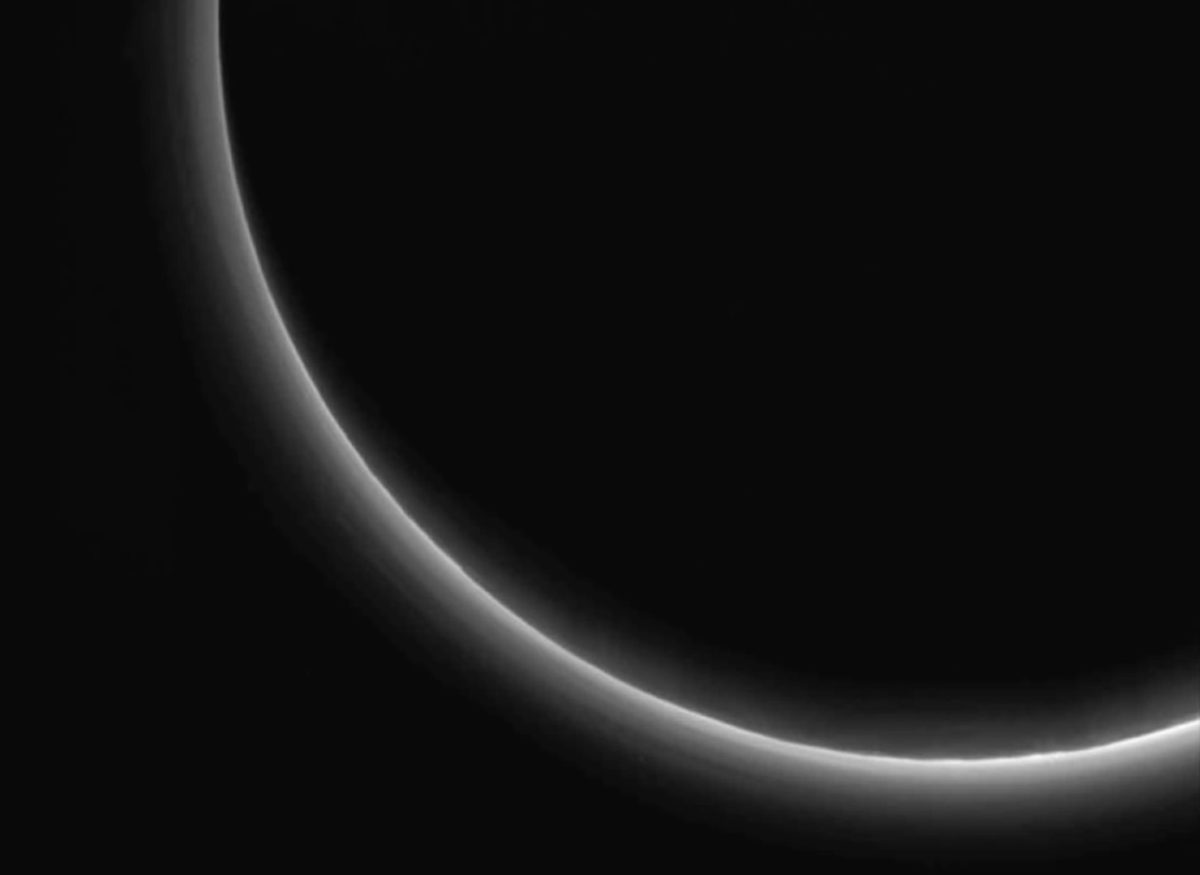
The first time I saw it, I literally gasped. I know another scientist who cried. We knew, intellectually, that New Horizons would detect Pluto's atmosphere when it flew past. A large segment of the science being done after closest approach involved a stellar occultation, in which we were going to stare at our own star as it set behind Pluto to probe the structure of the atmosphere. But I certainly didn't expect that the atmosphere would shine so brilliantly to the camera. And I definitely didn't expect to see obvious layers.
As soon as I saw the photo today, I fired an email off to several people on the New Horizons team I knew had special reason to care about seeing Pluto's atmosphere, asking them for their reactions to the photo. All have published work on stellar occultations by Pluto, using much weaker stars to try to understand the atmosphere. Happily, two replied:
First reaction was esthetic. It is all so beautiful.
The second was evocative. We are moving away at 1000 Pluto radii a day.
The third was bafflement. It's a good thing we have such a complementary suite of instruments. Any single measurement would lead us astray.
- Leslie Young
My first reaction was that it was a stunning image. It was beautiful and stark.
But then soon I started to think about it… how high is that haze? Am I really seeing haze go up that high? And like so many other images from this encounter, it made me stop and think and reassess.
- Cathy Olkin
The New Horizons team "unwrapped" the image, taking out the curvature of Pluto, and squishing the result horizontally to emphasize subtle variatons in haze altitudes. You can clearly see a distinct haze layer as high as 83 kilometers above the surface; there are hints of more, even higher than that.
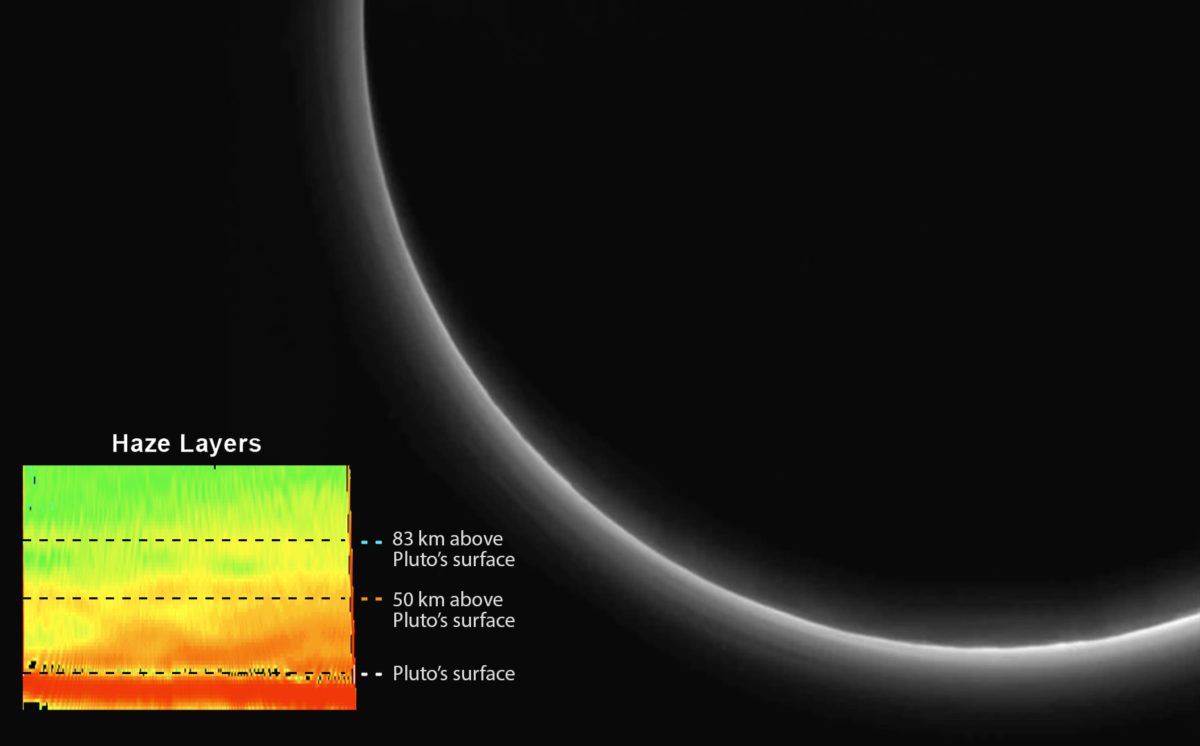
To my surprise, there were more lookback images. According to my "what to expect" post, the image at the top of this article was the only one I expected from the immediate post-flyby period. However, the mission added five more optical navigation photos into the downlink plan after the close-encounter period was over. Here is one of those opnavs (actually, it's two of them, stacked).
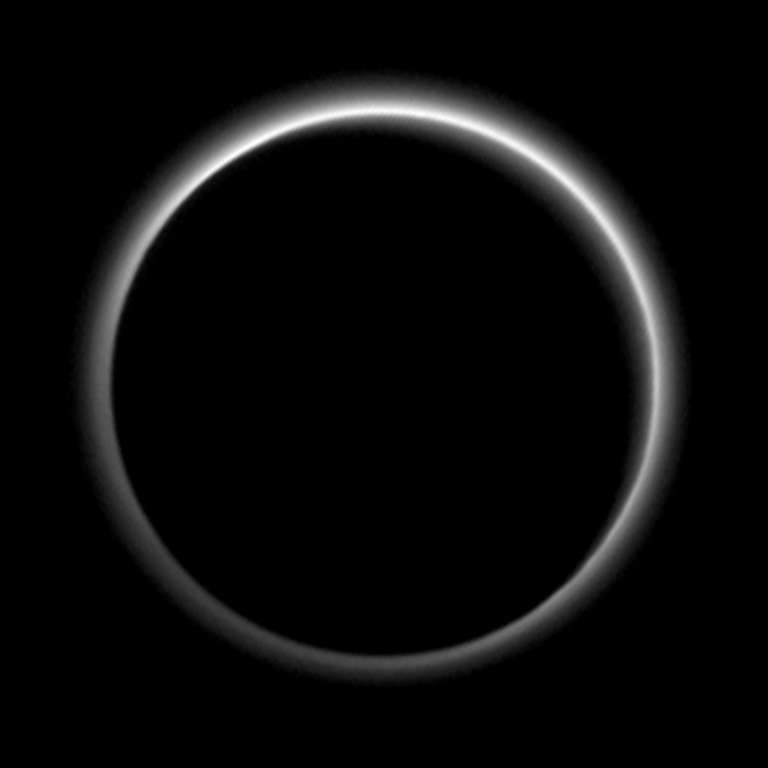
This image looked so, so familiar. Here, I've paired it with a photo of Titan from Cassini, taken with almost identical geometry, and scaled the same. Titan, on the left, is a bit more than twice the diameter of Pluto.
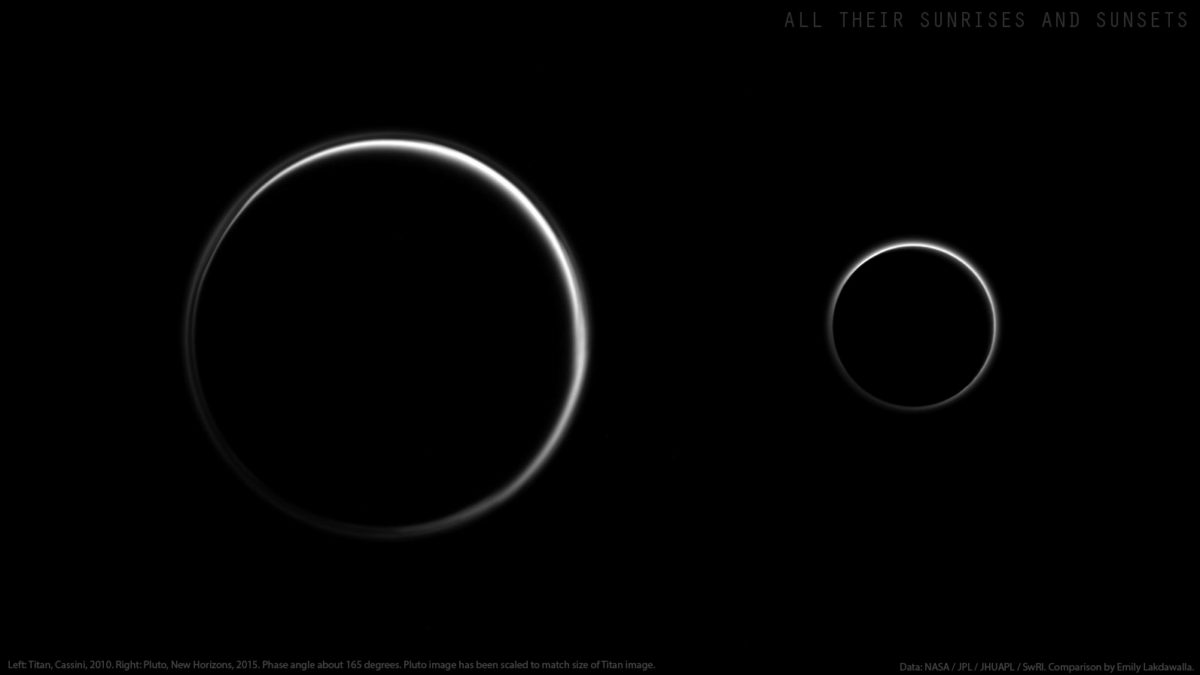
Kim Ennico told me the basic data for these post-flyby lookback opnavs:
After today's press briefing, they released all the raw images that had been downlinked as of Tuesday. So I can finally complete my montage of the New Horizons Pluto encounter data set....except that now I know I am waiting for those five opnavs! They should be released next Friday.
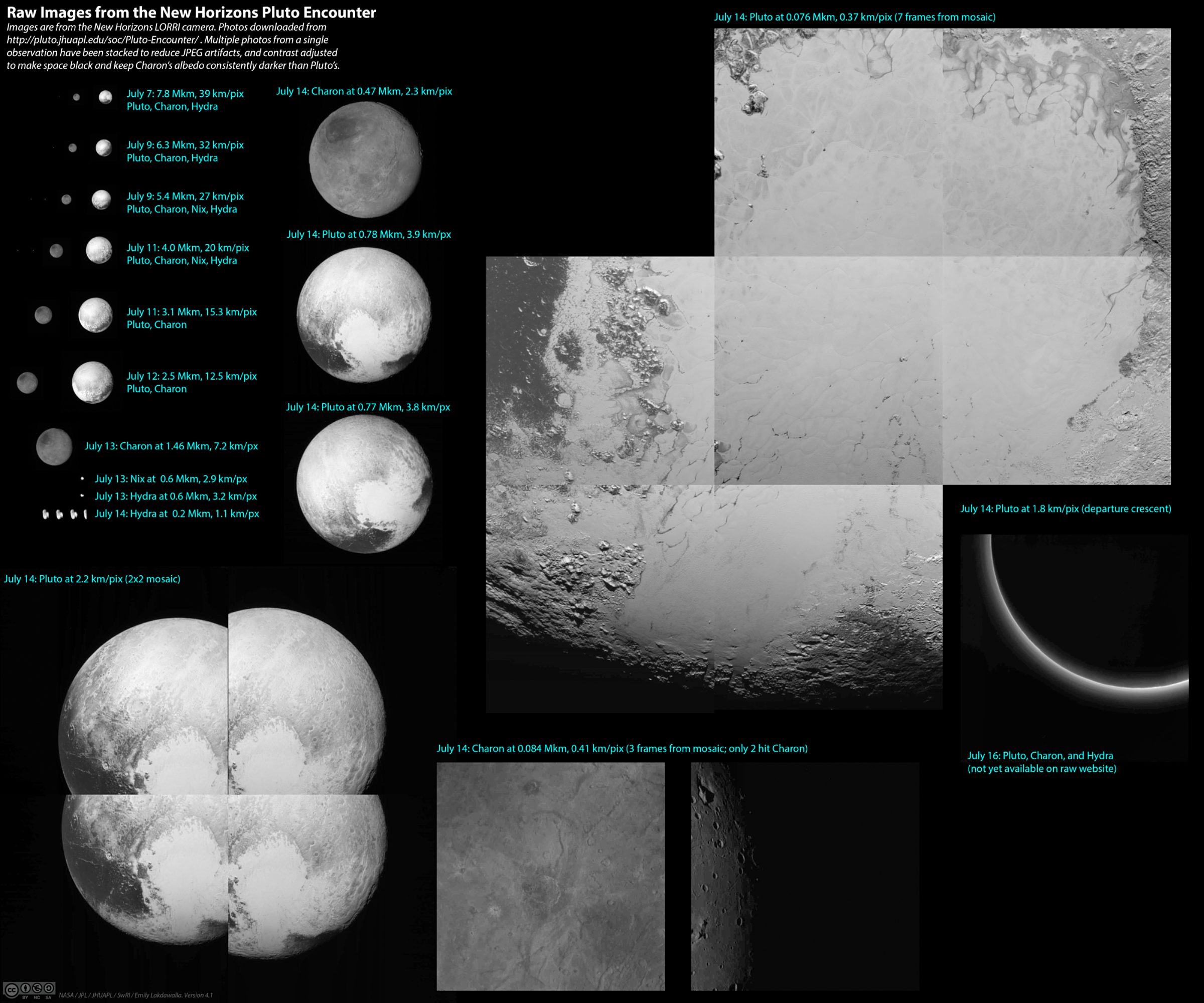
Since the raw images were released so late in the day, I didn't want to rush to post about what amateurs are doing with them. I am going to give the amateur community all weekend to make terrific visualizations from the data released today, and I will do a roundup post on Monday. Stay tuned for that!
In the meantime, if you can't get enough Pluto, check out all the images from today's press briefing, and look around at all the top science news websites for people's writeups of what was said at the briefing today (I particularly recommend Alex Witze at Nature, Eric Hand at Science, Nadia Drake at National Geographic, and Mika McKinnon at io9; you may also enjoy Alex Parker's words on these images, and Sarah Horst's musings about haze. I need a little more time with these images before I'm ready to analyze!
Support our core enterprises
Your support powers our mission to explore worlds, find life, and defend Earth. You make all the difference when you make a gift. Give today!
Donate

 Explore Worlds
Explore Worlds Find Life
Find Life Defend Earth
Defend Earth

